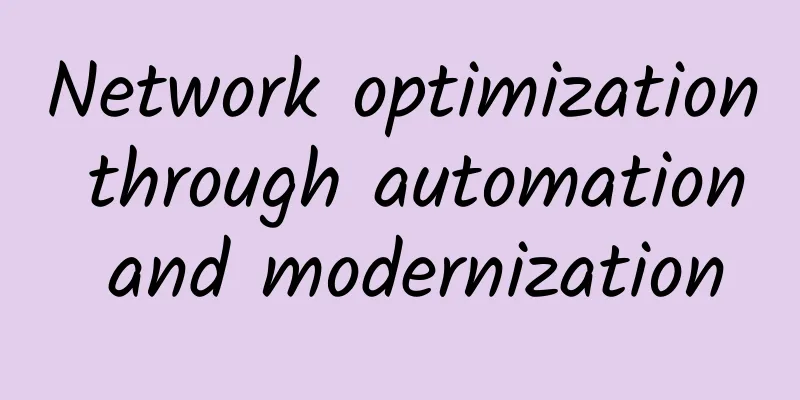Java performance optimization RPC network communication

|
The core of the service framework
The split of services increases the cost of communication, so remote communication can easily become a system bottleneck.
Service communication in many microservice frameworks is based on RPC communication
Performance Testing Based on Dubbo:2.6.4, single TCP long connection + Protobuf (better response time and throughput), short connection HTTP + JSON serialization RPC Communication Architecture Evolution Whether it is microservices, SOA, or RPC architecture, they are all distributed service architectures, and they all need to achieve mutual communication between services. This kind of communication is usually collectively referred to as RPC communication. concept
RMI
Implementation principle The RMI remote proxy object is the core component of RMI. In addition to the virtual machine where the object itself is located, other virtual machines can also call methods of this object. These virtual machines can be distributed on different hosts, and through remote proxy objects, remote applications can communicate using network protocols and services. Performance bottleneck under high concurrency Java default serialization RMI serialization uses Java default serialization, which has poor performance and does not support cross-language serialization. TCP short connection RMI is implemented based on TCP short connections. In high-concurrency situations, a large number of requests will lead to the creation and destruction of a large number of TCP connections, which consumes a lot of performance. Blocking Network IO In socket programming, the traditional IO model is used. In high-concurrency scenarios, network communication based on short connections is prone to IO blocking, which greatly reduces performance. Optimize Path TCP/UDP The network transmission protocols are TCP and UDP, both of which are based on Socket programming Socket communication based on TCP protocol is connected The data transmission needs to be done through three-way handshake to achieve the reliability of data transmission. The data transmission has no boundaries and adopts the byte stream mode. Socket communication based on UDP protocol. The client does not need to establish a connection, but only needs to create a socket to send data to the server. Socket communication based on UDP protocol is unreliable The data sent by UDP is in datagram mode. Each UDP datagram has a length, which is sent to the server together with the data. In order to ensure the reliability of data transmission, TCP protocol is usually used. In a local area network, if there is no requirement for data transmission reliability, you can consider using the UDP protocol, which is more efficient than the TCP protocol. Long Connection Communication between services is different from communication between clients and servers. Due to the large number of clients, implementing requests based on short connections can avoid occupying connections for a long time, which leads to waste of system resources. For communication between services, there are not as many connected consumers as clients, but the number of requests from consumers to servers is the same. Based on the long connection implementation, a large number of operations of establishing and closing TCP connections can be saved, thereby reducing the performance consumption of the system and saving time. Optimizing Socket Communication Traditional Socket communication mainly has problems such as IO blocking, thread model defects and memory copying. Netty4 has made many optimizations to Socket communication programming. Implementing non-blocking IO: The multiplexer Selector implements non-blocking IO communication Efficient Reactor thread model Netty uses the master-slave Reactor multi-threaded model Main thread: used for client connection request operations. Once the connection is established successfully, it will listen to IO events and create a link request after listening to the event. The link request will be registered to the IO worker thread responsible for IO operations, and the IO worker thread will be responsible for subsequent IO operations. The Reactor thread model solves the problem that a single NIO thread cannot monitor a large number of clients and meet a large number of IO operations in high concurrency situations. 4.Serial design After receiving the message, the server has link operations such as encoding, decoding, reading and sending. If these operations are implemented in parallel, it will undoubtedly lead to serious lock contention, which will lead to a decrease in system performance. In order to improve performance, Netty uses serial lock-free to complete link operations and provides Pipeline to implement various operations of the link without switching threads during operation. 5. Zero Copy When data is sent from memory to the network, it is copied twice, first from user space to kernel space, and then from kernel space to network IO. The ByteBuffer provided by NIO can use the Direct Buffer mode Directly open up a non-heap physical memory, without the need for a secondary copy of the byte buffer, and write data directly to the kernel space 6. Optimize TCP parameter configuration to improve network throughput. Netty can be set based on ChannelOption
Customized message format Design a set of messages to describe specific verification, operations, data transmission, etc. In order to improve transmission efficiency, the design can be based on actual conditions, and try to achieve characteristics such as small message size, satisfactory functions, and easy parsing. Field length (bytes) Remarks Magic number 4 Protocol identifier, similar to the magic number of the bytecode, usually a fixed number Version number 1 Serialization algorithm 1 Protobuf / Thrift instruction 1 Similar to the addition, deletion, modification and query in HTTP Data length 4 Data N Codec To implement a communication protocol, you need to be compatible with an excellent serialization framework If it is just a simple data object transmission, you can choose Protobuf serialization with relatively good performance, which is conducive to improving the performance of network communication TCP parameter settings for Linux Three-way handshake Four waves Configuration items 1.fs.file-max=194448/ulimit 2.net.ipv4.tcp_keepalive_time 3.net.ipv4.tcp_max_syn_backlog 4.net.ipv4.ip_local_port_range 5.net.ipv4.tcp_max_tw_buckets 6.net.ipv4.tcp_tw_reuse Remark 1. The default limit of the number of files that a single process can open in Linux is 1024, and Socket is also a file 2. The function is consistent with Netty's SO_KEEPALIVE configuration item 3. The length of the SYN queue. Increasing the queue length can accommodate more network connections waiting to be connected. 4. When the client connects to the server, the source port number needs to be dynamically allocated. This configuration item indicates the port range for outbound connections. 5. When a connection is closed, TCP will complete a connection closing operation by waving four times. When the number of requests is large, there will be a large number of connections in TIME_WAIT state on the consumer side. This parameter can limit the number of connections in TIME_WAIT state. If the number of TIME_WAIT connections exceeds this value, TIME_WAIT will be cleared immediately and a warning message will be printed. 6. Each time the client connects to the server, it will obtain a new source port to achieve the uniqueness of the connection. If the number of connections in the TIME_WAIT state is too large, the port number will be occupied for a longer time. Since the connection in the TIME_WAIT state is a closed connection, the newly created connection can reuse the port number. |
>>: Experts: 6G will be available in 10 years and is expected to be 100 times faster than 5G
Recommend
Can the telecommunications operating market break out of the "siege" under the epidemic's "stay-at-home economy"?
In 2020, the "new crown" black swan cam...
Maximum connectivity through fiber optic and Ethernet ports
In today's digital environment, high-speed da...
Are you afraid of pressing Enter? 13 Junos tips to help you configure your network easily and without worries
[[203887]]...
China Academy of Information and Communications Technology: China's 5G mobile phone shipments in March reached 27.498 million units, a year-on-year increase of 76.2%
On April 12, the China Academy of Information and...
Five Breakthrough Practices for Future 5G Capabilities
【51CTO.com Quick Translation】At the 2019 Mobile W...
Novos: €8/month KVM-2GB/40G NVMe+1TB/25TB/Belgium
According to information from LEB, Novos.be is a ...
Just look at these three pictures and you can understand the OTN layered structure
OTN (Optical Transport Network) is a hierarchical...
Come and have a look!!! TCP/IP knowledge points that you often overlook
Internet Layer Protocol In the DoD model, the Int...
How to choose between open source self-built/hosted and commercial self-developed trace?
[[419923]] With the rise of microservice architec...
AkkoCloud newly launched CN2 GIA line in London, UK, with annual payment starting from 299 yuan and 10% discount for monthly payment
AkkoCloud sent new product information. This mont...
Ruishu Information opens a new starting point for "dynamic braking" security to identify and block the batch output of information by "legal insiders" in banks
On November 5, 2016, CCTV reported that the Miany...
Cure the difficulty of choosing! What are the differences between 5G, Wi-Fi 6, and Wi-Fi 6E?
[[428494]] This article is reprinted from the WeC...
HostYun Unicom AS4837 line KVM is available with 15% discount and monthly payment starts from 17 yuan
Earlier this month, we shared the news that HostY...
10,000-word article on DNS protocol!
[[376851]] Consider this question: how many ways ...
Tencent Cloud New Year Special Offer: 2C2G4M Cloud Server 30 Yuan/3 Months or 108 Yuan/Year
From February 15th to February 28th, Tencent Clou...






![[11.11] Megalayer: 50% off on regular VPS, Hong Kong/Philippines/US VPS starting at 159 yuan per year](/upload/images/67cac22f4c904.webp)


